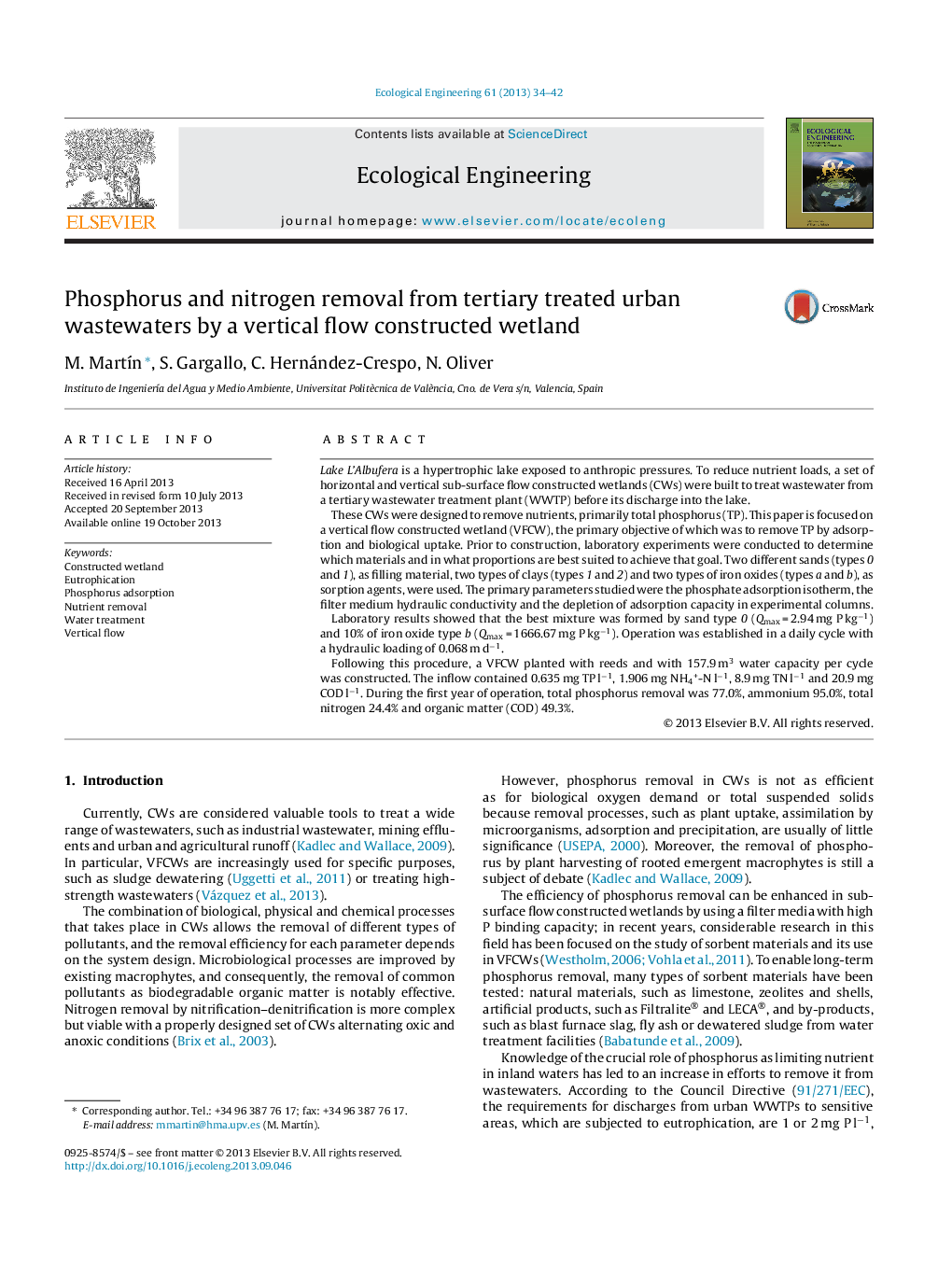| Article ID | Journal | Published Year | Pages | File Type |
|---|---|---|---|---|
| 4389459 | Ecological Engineering | 2013 | 9 Pages |
•A VFCW has been constructed to treat wastewaters from a WWTP with tertiary treatment.•The iron oxide (hematite) is a suitable material to remove TP in VFCW.•The role of the plants is significant in TP removal (35.6% of TP removed).•The percentage of TP removal is higher than 75%.•Other benefits are the complete nitrification of NH4+, the removal of TN and COD.
Lake L’Albufera is a hypertrophic lake exposed to anthropic pressures. To reduce nutrient loads, a set of horizontal and vertical sub-surface flow constructed wetlands (CWs) were built to treat wastewater from a tertiary wastewater treatment plant (WWTP) before its discharge into the lake.These CWs were designed to remove nutrients, primarily total phosphorus (TP). This paper is focused on a vertical flow constructed wetland (VFCW), the primary objective of which was to remove TP by adsorption and biological uptake. Prior to construction, laboratory experiments were conducted to determine which materials and in what proportions are best suited to achieve that goal. Two different sands (types 0 and 1), as filling material, two types of clays (types 1 and 2) and two types of iron oxides (types a and b), as sorption agents, were used. The primary parameters studied were the phosphate adsorption isotherm, the filter medium hydraulic conductivity and the depletion of adsorption capacity in experimental columns.Laboratory results showed that the best mixture was formed by sand type 0 (Qmax = 2.94 mg P kg−1) and 10% of iron oxide type b (Qmax = 1666.67 mg P kg−1). Operation was established in a daily cycle with a hydraulic loading of 0.068 m d−1.Following this procedure, a VFCW planted with reeds and with 157.9 m3 water capacity per cycle was constructed. The inflow contained 0.635 mg TP l−1, 1.906 mg NH4+-N l−1, 8.9 mg TN l−1 and 20.9 mg COD l−1. During the first year of operation, total phosphorus removal was 77.0%, ammonium 95.0%, total nitrogen 24.4% and organic matter (COD) 49.3%.
